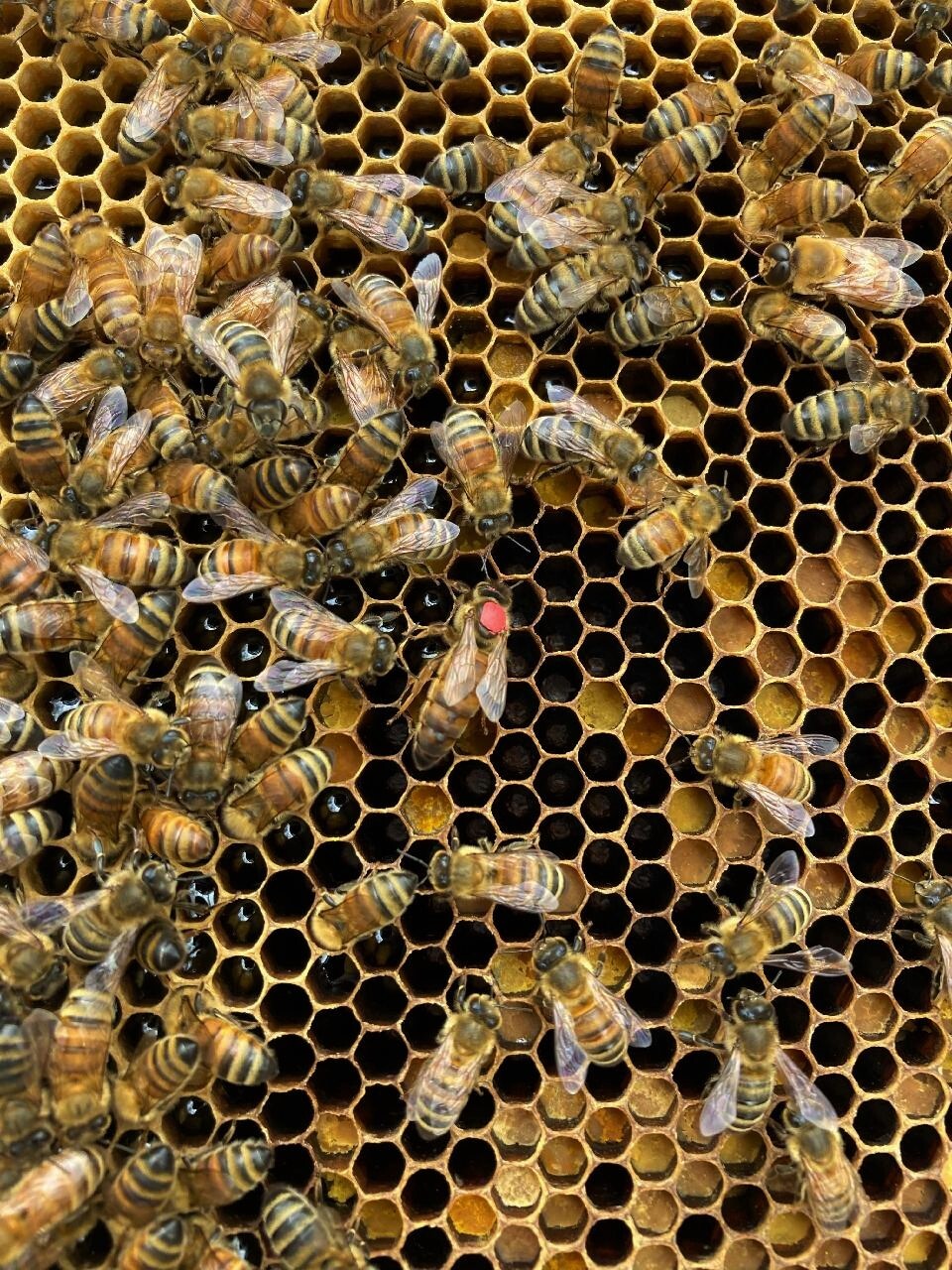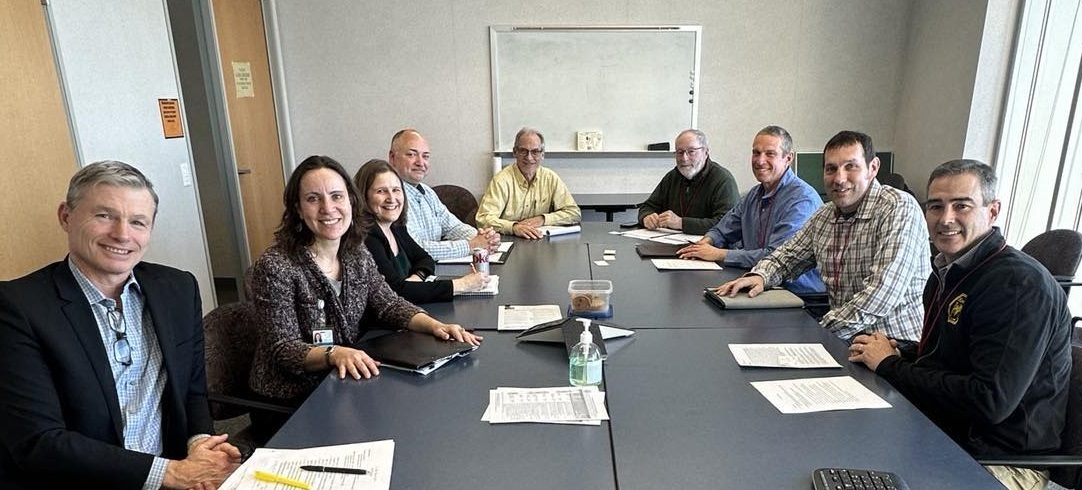|
DATCP recently received federal support for an initiative to continue enhancing apiary outreach work, including updating our honey bee pest ID cards and pollinator protection outreach, along with expanding access to timely, molecular pest diagnostics for Wisconsin beekeepers. Specifically, in addition to participating in the National Honey Bee Survey again in 2024, we will now also be able to send up to 26 honey bee and 26 hive debris samples per year for the next two years to the National Agricultural Genotyping Center (NAGC) for analysis using their Full Honey Bee Pathogen Panel (HB-Q) and the TLC Triplex Panel at no cost to our beekeepers.
The National Agricultural Genotype Testing Center (NAGC) is a nonprofit organization that has internationally recognized accreditation as a testing facility (ISO/IEC 17025) located in the Edward T. Schafer Agricultural Research Center on the campus of North Dakota State University. NAGC tests honey bee pests, pathogens, and viruses using molecular diagnostics, helping to verify suspected pests and diseases observed during visual inspections. Samples may be comprised of adult bees, larva, honey, wax, or hive debris. NAGC tests for a full range of honey bee pests and pathogens, including acute bee paralysis virus, black queen cell virus, Kashmir bee virus, Lake Sinai Virus 1, Lake Sinai Virus 2, American Foulbrood, Chronic Bee Paralysis Virus, Deformed Wing Virus, Israeli Acute Bee Paralysis Virus, Slow Bee Paralysis Virus, European Foulbrood, Nosema apis, Nosema ceranae, Varroa Destructor Virus, Sacbrood Virus, and Tropilaelaps spp. All pests and pathogens are analyzed using probe-based detection and quantification analysis. The lab operates under a quality management system and is ISO certified. All samples are processed within 30 days of receipt and reports sent to DATCP and beekeepers with sampling results.
The NAGC is gaining acclaim and popularity in the apiary field, with half of US states now using their services. In 2023, NAGC tested 1,591 honey bee samples from 24 different states, including Hawaii. The most common sample type was adult bees (825 samples) followed by hive debris (443 samples) and brood swabs (259 samples). In January, NAGC’s Dr. Zack Bateson received the Researcher of the Year Award from the Apiary Inspectors of America (AIA). This award is given annually to one outstanding scientist who has contributed positively and significantly to apiculture during the previous year in their research efforts and work. Zack’s official nomination included the following statement: "The NAGC is the only laboratory of this kind to offer such services to beekeepers and inspectors. The services offered at the NAGC, with the leadership of Zack, are well ahead of the curve when it comes to new and emerging honey bee pests and diseases. This is particularly important as the threat of Tropilaelaps increases."
Wisconsin apiary staff are eager to provide inspection services to beekeepers this year. Our two seasonal staff, Patrick Sizemore and Donna Stine, are again expected to be available between May and November. They will be joined by our new apiary program coordinator as soon as that person is selected and can start. If you would like to request a free, voluntary apiary inspection for your bees, or if you need a $50 certificate of inspection to move your bees to another state for pollination services, please contact DATCPapiary@wisconsin.gov so that our staff can follow up with you later this season.

On February 28, DATCP Sec. Randy Romansky and other staff met with the Wisconsin Honey Producer's Association leaders to discuss the vital role honey bees play in crop pollination and honey production. Concerns discussed included striving to ensure strong support for the apiary program, hiring adequate apiary inspection staff to meet beekeeper needs, enforcing import rules, and addressing emerging invasive pest threats like Tropilaelaps mites. That meeting led to a statewide press release from DATCP on contributions of honey bees to Wisconsin's agricultural industry sent on March 14.
According to USDA, Wisconsin ranked 11th in the nation for honey production in 2022. Beekeepers with five or more colonies produced 2.92 million pounds of honey valued at $8.86 million, and we had 53,000 honey producing colonies in the state. According to Wisconsin’s Pollinator Protection Plan, insect-pollinated crops like apple, cranberry, cherry, green beans, pickling cucumbers, and fresh fruits and vegetables account for $230 million in annual production. Counteracting threats to honey bees and wild pollinators, including pests and diseases, habitat loss, pesticide misuse, and improper management, is therefore paramount.
Apiary program staff provide pest and disease diagnostic services and management advice for over 250 honey producers and commercial pollinators each year. State inspections are used to generate inspection certificates required to transport hives to other states for crop pollination. Annual survey data and hive samples collected by apiary staff are part of a national USDA-funded survey on apiary health. DATCP is also charged with promoting Wisconsin's Pollinator Protection Plan to beekeepers, gardeners, farmers, restoration ecologists, and the public. At our meeting, we discussed recent program developments, including our apiary coordinator recruitment, new grants we've obtained for diagnostics and outreach, and Sec. Romanski's support of the NASDA resolution on Tropilaelaps mites. We also exchanged ideas on how we can continue to improve import compliance and continue to meet inspection and certification needs for commercial beekeepers while also providing strong support to beginning hobbyist beekeepers to reduce risks of pest and disease spread. We always appreciate the opportunity to interact with stakeholders, and we are excited about new developments in the apiary program.

Find more information about the DATCP Apiary Program and the Wisconsin Pollinator Protection Plan via the DATCP Beekeeping and Pollinators webpage.
Division of Agricultural Resource Management | Bureau of Plant Industry
Having trouble viewing this email? View it as a Web page.
|